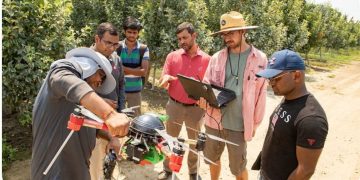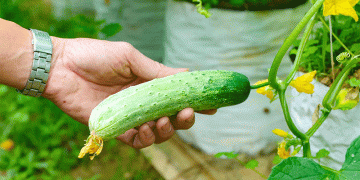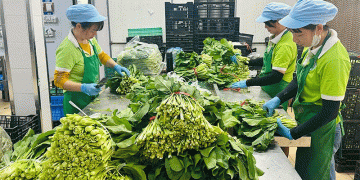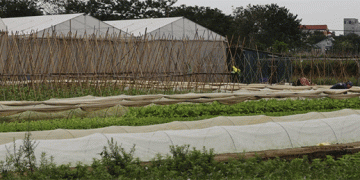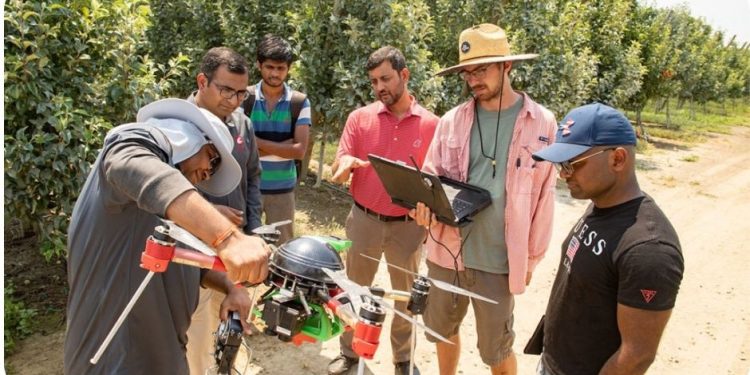With a new $20 million federal grant, Washington State University will lead a multi-institutional research institute to develop artificial intelligence (AI) solutions to tackle some of agriculture’s biggest challenges related to labor, water, weather and climate change.
The new institute is one of 11 launched by the National Science Foundation and among two funded by the U.S. Department of Agriculture-National Institute of Food and Agriculture in 2021. It’s called the AgAID Institute, which is short for USDA-NIFA Institute for Agricultural AI for Transforming Workforce and Decision Support.
While traditional AI development involves scientists making tools and delivering them to end-users, the AgAID Institute will involve the people who will use the AI solutions – from farmers and workers to policy makers—in their development, said Ananth Kalyanaraman, a WSU computer science professor and the lead principal investigator for the Institute.
“People are very much part of the agricultural ecosystem. It’s not just plants growing. Humans manipulate crops on a daily basis and make complex decisions, such as how to allocate water or mitigate the effects of an incoming storm,” said Kalyanaraman, who also holds the Boeing Chair in WSU’s School of Electrical Engineering and Computer Science. “We aim to partner human knowledge with AI tools in a way that amplifies the end outcomes where the whole is greater than the sum of its parts.”
The AgAID Institute will be a multi-disciplinary, collaborative effort involving faculty and scientists with expertise on a diverse range of areas in computer science, agriculture and agricultural outreach.
In addition to WSU, the Institute members include Oregon State University; University of California, Merced; University of Virginia; Carnegie Mellon University; Heritage University; Wenatchee Valley College; and Kansas State University. Private sector partners include IBM Research and the start-up innov8.ag.
The AgAID Institute will take an “adopt-adapt-amplify” approach, Kalyanaraman said. This means first the Institute will design AI solutions in partnership with the people who use the tools, so they are practical and more likely to be adopted. The researchers will also work to make solutions that can adapt to changing environments and that amplify productivity by combining human skills and machine capabilities to be more effective than either would be alone. For instance, pruning trees is a highly skilled task, but a beginner-level worker could benefit from an AI tool that provides expert guidance to help decide which is the best branch to prune. The task is done better, and the worker starts to learn from the feedback, and with a shortage of skilled labor, AI can benefit both the orchard and the worker, said Kalyanaraman.
“It’s a partnership. AI can help us basically bridge the divide between high-skilled and low-skilled workers,” he said.
Educating the workforce at all levels is central to the AgAID Institute not just to encourage AI adoption but as a matter of equity, according to the Institute leaders. The Institute plans multiple education programs from K-12 through higher education and worker training. The goal is to raise AI skill levels and open new career paths, which can improve pay and quality of life for agricultural workers. It can also attract more people to agriculture and computing professions.
The AgAID Institute will undertake several challenging test cases involving specialty crops, many of which grow in the Western United States, such as apples, cherries, mint and almonds. These crops encompass several major challenges: they require intensive labor and irrigation. They are also vulnerable to weather events and climate change. Specialty crops account for 87% of the U.S. agricultural workforce, and about 40% of these crops are perennial, requiring long-term management and resource planning.
The difficult challenges posed by these cases would mean AgAID Institute’s solutions would be rigorously tested before being transferred to other regions in the country, said Kalyanaraman.
“We know that AI has a serious potential to make groundbreaking discoveries and transform our decision-making capabilities in a data-informed way, but the technology needs to be developed in a very careful manner,” he said.
This award is part of a significant investment by the federal agencies in state of Washington AI leadership, noted U.S. Sen. Maria Cantwell. Two of the 11 funded institutes will be headed by universities in the state: in addition to the WSU-led AgAID Institute, the University of Washington will be leading the NSF AI Institute for Dynamic Systems.
“The state of Washington is already a leader in artificial intelligence,” said Cantwell. “From the University of Washington’s Tech Policy Lab that studies the grand challenges around artificial intelligence to Washington State University’s work in precision agriculture, we are more than ready for these two grants to help us understand more artificial intelligence applications. The UW will work in the area of complex systems to improve fields like manufacturing and WSU will work on improvements in farming.”
Rep. Cathy McMorris Rodgers also expressed her support for the new AgAID Institute.
“Washington State University has long been a leader in agriculture, innovation and technology,” said McMorris Rodgers. “I was proud to be a part of the conversation at the university’s Agriculture AI Summit in October 2020 and am pleased to see that WSU received designation as the USDA-NIFA Institute for Agricultural AI for Transforming Workforce and Decision Support today. This institute, also known as AgAID, will integrate AI methods into agriculture operations for prediction, decision support and robotics-enabled agriculture to address the complex agricultural challenges facing Eastern Washington and the nation. I look forward to seeing the innovative work that will come out of this Institute to support our state’s agricultural industries.”
– Sara Zaske, WSU News
WSU post-doctoral fellow Abhilash Chandel explains to an AgAID Institute team how the drone’s sensing technology collects multispectral and thermal imagery data from a “smart farm” in Yakima County. Photo: WSU
